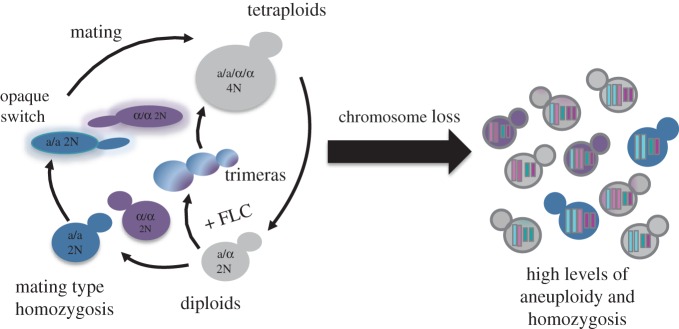Figure 3.
Model for mechanisms of ploidy shift in C. albicans. Diploids that become mating type homozygous and switch to the opaque state can undergo mating to form tetraploids. Alternatively, in the presence of fluconazole (+FLC), trimeras form and yield tetraploids. Tetraploids produced in either way can undergo chromosome mis-segregation and a reduction in ploidy to return to a near-diploid state, which can include chromosomes that underwent a gain or loss and/or are aneuploid. This generates genotypic and phenotypic diversity without meiotic divisions [29,30]. Trimeras appeared after 4–24 h; mutlimeras were much less prevalent, but at least a few multimeras were evident by microscopy.

